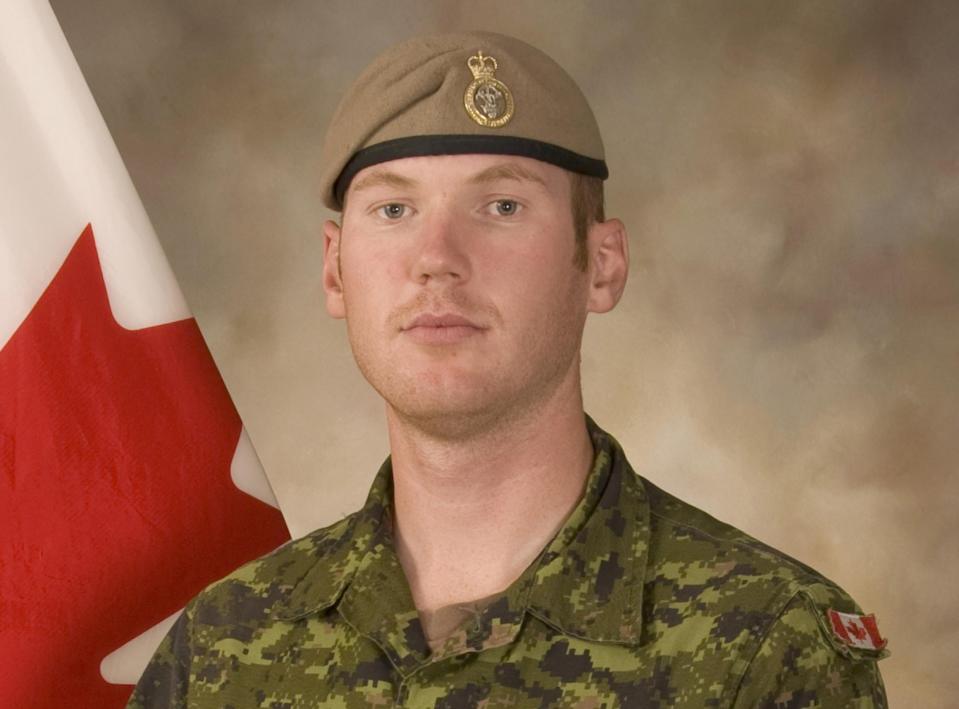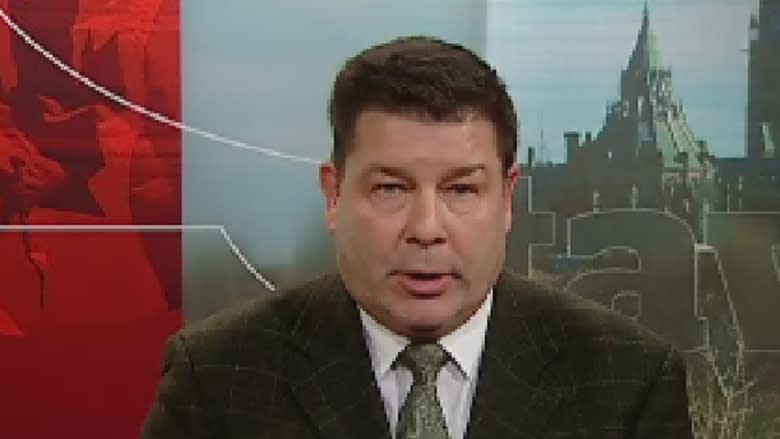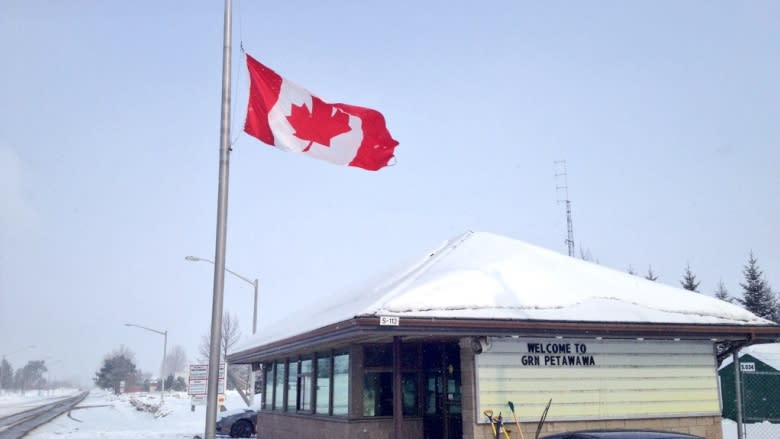Sgt. Andrew Doiron a casualty of ISIS's 'fluid' front lines
In the fog of modern warfare, Sgt. Andrew Doiron's death by friendly fire in Iraq shows how "asymmetric" and hazy the boundaries of battle have become, say military and defence analysts.
Gunfire from Kurdish troops killed the Canadian soldier Friday at a checkpoint in the village of Bashiqa.
As Kurdish officials claimed the Canadians arrived unannounced at the post, Defence Minister Jason Kenney maintained Doiron and his group were 200 metres behind the "front lines" of combat.
That bit of military parlance touched off questions on Parliament Hill about what constitutes a front line in an age when rockets and drones can strike from many kilometres away.
"That's the challenge the minister has right now in communicating the nature of this warfare to the community," says Christian Leuprecht, an associate professor at the Royal Military College of Canada.
"This is not World War One, this is not trench warfare. The front lines can shift in a matter of minutes, perhaps hours. It's very fluid."
In places like Syria and Iraq, war is more mobile, with military concentrations spread throughout a region to manage the expectation of what threats might arrive at certain checkpoints, explained Sim Tack, a military analyst with the Texas-based global intelligence and advisory firm Stratfor.
The problem, Tack said, is the lines of battle are so unpredictable when dealing with insurgent forces.
Kenney's reference to 200 metres behind the front line "is kind of odd," Tack said. "It might be possible to somehow draw a front line in the situation in northern Iraq today, but it would be very fuzzy."
The line of contact
The Department of National Defence defines a front line in a battle as "the line of contact of two opposing forces."
That may hold true for the conflict unfolding in eastern Ukraine, where the lines are clear between the pro-Russian rebel forces manning one side and the Ukrainian military on the other.
But in general, the concept of a clear demarcation between friendly and enemy forces goes back to the First and Second World Wars, says Christopher Harmer, a senior naval analyst with the U.S.-based Institute for the Study of War.
"The front line is a concept that has been overcome by events," Harmer said. "Combat no longer ends just because personnel are not on the front lines."
For example, sleeper cells, suicide bombers and snipers may not be actively fighting, but they could be waiting for an opportune time to strike.
Wartime strategies have evolved, along with technology extending the reach of weapons. That has, in turn, broadened the battleground.
"ISIS can drive up and try to overrun some territory in a moment, going well over 100 km/hr, even with a dozen guys in the back" of a pickup truck, Leuprecht said.
The tactic is considered part of today's "asymmetric warfare," in which insurgents launch bursts of "hit and run" activity to compensate for being outgunned in weaponry, he said.
Officially, Canada's role in the U.S.-led war on the Islamic State has been as part of an "advise and assist" mission to help Kurdish Peshmerga forces fight ISIS.
Advise and assist
But Doiron's death on Friday inflamed the debate.
"At the beginning, we were told the mission would involve airstrikes and training, but now we discover our service people are on the front lines," NDP MP Megan Leslie said in the House of Commons on Monday.
She demanded to know "how many Canadian service people are currently in combat situations in Iraq?"
The fact that Doiron and his Canadian comrades — three of whom were wounded in Friday's shootings — were 200 metres away from the so-called front line still didn't preclude them from being in range of deadly fire.
That should count for something, says Scott Taylor, a correspondent with the Canadian military magazine Esprit de Corps.
"Is 200 metres behind the front line the front line? Of course it is," Taylor told CBC News Network, noting that "crew-served weapons engage up to 2,000 metres."
In an advise and assist capacity, Canadians would not be "at the tip of the spear," defence analyst Leuprecht said. But they do have an active role in providing intelligence and operational support.
That's what he believes Kenney was trying to communicate by saying the Canadians were well behind front lines.
"They're not at the forefront of a charge, running against ISIS," Leuprecht said. "They're holding the spear, making sure it moves in the right direction and pokes at the right target."
Advisers targeted
Obviously, Canadians need not be at the tip of the spear to come under attack.
The distinction between a soldier in a combat and someone in an advisory role means little to an enemy like ISIS, Harmer argues.
"While I'm sure that our respective governments want to restrict our military operations to the advise and assist mission, the reality is the enemy gets a vote," he said.
"They will attack Western advisers in Iraq anytime, anywhere, and in any way possible."
One way or another, Walter Dorn believes the tragic mistake that killed Doiron could have been prevented by technology.
IFF (Identification, friend or foe) transmitters would be able to scan patches worn by soldiers or read certain reflections on the millimetre wave radar to parse good guys from enemies, says Dorn, a professor of defence studies at the Royal Military College of Canada.
"These are life-saving technologies that could have helped avoid this situation."




